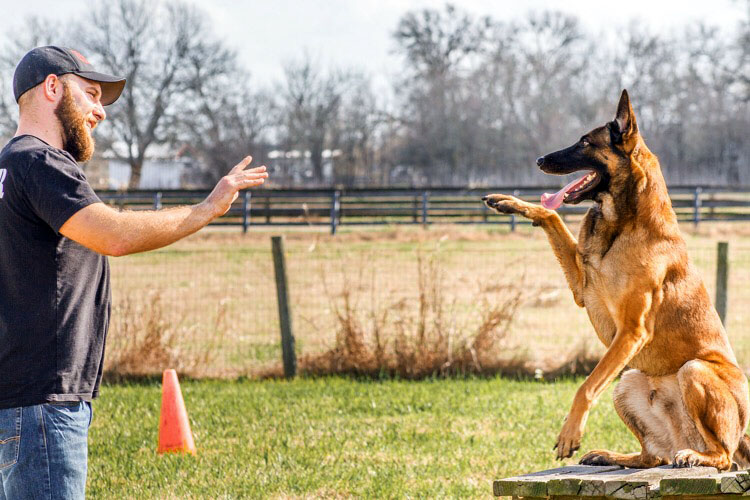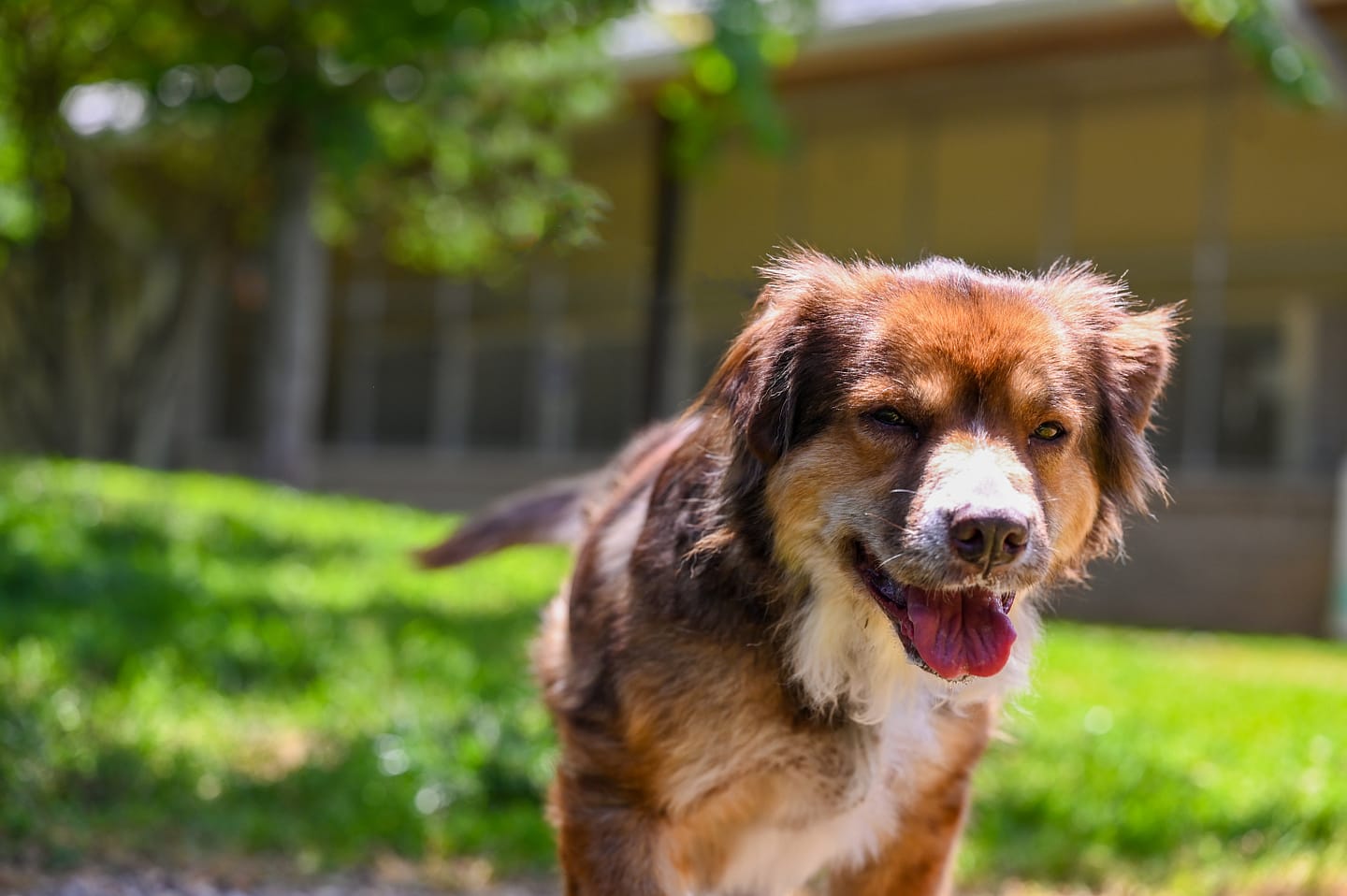Enjoyable Tasks to Enhance Your Dog Training Experience
Enjoyable Tasks to Enhance Your Dog Training Experience
Blog Article
Essential Tips for Successful Dog Training: An Overview for Pet Owners
Effective dog training is a multifaceted process that calls for a calculated strategy customized to both the family pet's character and the proprietor's purposes. Recognizing how to browse these barriers can substantially boost the training experience, eventually changing the partnership between owner and dog.
Understanding Dog Behavior
Recognizing canine behavior is crucial for efficient training and promoting an unified relationship in between dogs and their owners. Canines interact mostly through body language, articulations, and actions, making it important for owners to interpret these signals properly. Acknowledging a canine's pose, tail setting, and ear alignment can supply understandings right into its mood. As an example, a wagging tail does not always indicate joy; it can likewise signal excitement or anxiety.

Socializing plays a substantial function in pet actions; exposure to various settings, people, and other pets can dramatically impact a dog's personality. Furthermore, variables such as type characteristics and private character need to direct training approaches, as some breeds might have details behavioral characteristics that require tailored strategies. By recognizing these aspects, owners can produce an encouraging atmosphere that motivates positive habits, bring about effective training outcomes and a deeper bond with their animals.
Developing Regular Commands
Reliable interaction with your pet begins with establishing constant commands. This foundational component of training is critical for fostering understanding between you and your animal. Consistency in the commands you use makes sure that your pet can accurately link details words or phrases with the preferred actions.
When picking commands, choose clear, unique words that are easy to separate and say from one an additional. Avoid utilizing similar-sounding commands that might puzzle your pet. As an example, using "sit" and "stay" is suitable, yet "sit" and "hit" might cause misconceptions.
Additionally, maintain the very same tone and quantity for each command. Dogs are delicate to vocal cues, so differing your tone can develop complication.
It is just as vital to make certain that all member of the family are on the very same web page relating to the commands made use of. A united front in command usage will stop blended signals and strengthen the understanding procedure.
Positive Reinforcement Techniques
The power of positive reinforcement in pet training exists in its capacity to urge wanted behaviors via rewards and praise. This strategy is based in the principle that actions complied with by favorable end results are most likely to be repeated. By incorporating positive reinforcement into your training routine, you can properly shape your dog's actions in a constructive fashion.
To execute positive reinforcement, it's vital to determine what motivates your canine, whether it be deals with, playthings, or verbal praise. When your dog carries out a desired action, such as resting on command, instantly award them with a treat or love. This organization between the command and the positive result reinforces their understanding.
It's vital to timing the incentives correctly; supplying the reinforcement within secs of the wanted behavior assists your pet dog make the connection (dog training). Additionally, uniformity is vital-- guarantee that all household participants make use of the very same commands and incentive systems to avoid complication

Gradually, you can lower the frequency of treats as your canine finds out the habits, transitioning to commend or periodic rewards. This method not just promotes a solid bond in between you and your pet but likewise promotes a positive learning atmosphere, making training a satisfying experience for both.
Socialization and Interaction
Continually exposing your dog to a selection of atmospheres, people, and various other animals is essential for their social growth. Socializing ought to begin early, ideally during the essential home window of 3 to 14 weeks, when pups are most responsive to brand-new experiences. However, older canines can additionally take advantage of ongoing socializing efforts.
Introduce your pet dog to various settings, such as parks, pet-friendly shops, and city areas. This direct exposure helps them adapt to different stimuli, lowering anxiousness and anxiety responses. Urge positive interactions with other pets and individuals, making sure that these encounters are safe and regulated to promote confidence.
Utilize structured playdates with courteous pets, as this can link boost your pet dog's social abilities and educate them appropriate habits. Obedience courses and training sessions additionally supply exceptional opportunities for socializing, enabling your pet to communicate with others in a supervised environment.
Screen your dog's body language throughout communications, as this will assist you evaluate their comfort level. Gradually enhance exposure to more tough circumstances while making certain that each experience declares. A well-socialized pet is most likely to display balanced behavior, making them a happiness to have in any kind of setting.
Attending To Typical Training Challenges
Every canine owner will certainly encounter training obstacles at some point, no matter their pet's age or socialization degree. Identifying usual issues such as stubbornness, distractions, and fearfulness can assist in developing reliable strategies for improvement.

Slowly introduce interruptions as the dog comes to be a lot more efficient in commands. Short, frequent training sessions are additionally reliable in maintaining interest.
Fearfulness can hinder click to read a dog's understanding procedure. Steady desensitization to the resource of anxiety, coupled with favorable support, can aid alleviate anxiety. Patience is critical; never compel a pet into a circumstance that causes distress, as this might worsen the concern.
Eventually, understanding and attending to these common obstacles with an organized strategy will certainly cultivate a much more effective training experience, enhancing the bond between pet and proprietor while advertising effective learning.
Verdict
In recap, effective dog training depends on a detailed understanding of canine behavior, the establishment of consistent commands, and the application of positive support techniques. Socializing plays a critical duty in creating well-adjusted animals, while attending to common training difficulties needs perseverance and flexibility. By executing these important approaches, pet owners can foster a solid bond with their pets and promote desirable behaviors, ultimately resulting in an unified connection in between humans and their canine friends.
Understanding pet habits is vital for efficient training and fostering content an unified partnership in between canines and their proprietors.Socializing plays a significant role in dog habits; exposure to various settings, people, and various other animals can dramatically affect a pet's character.The power of positive support in pet training exists in its capacity to motivate preferred behaviors through incentives and appreciation. By integrating favorable reinforcement into your training routine, you can efficiently form your canine's actions in a positive way.
In summary, effective pet training depends on a thorough understanding of canine habits, the facility of constant commands, and the application of favorable support methods.
Report this page